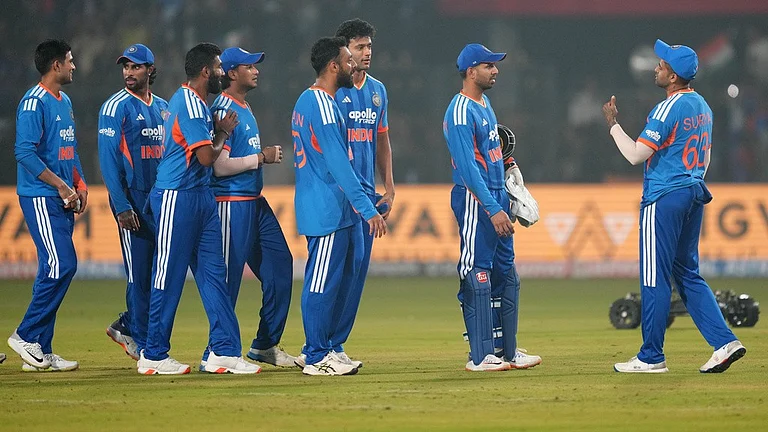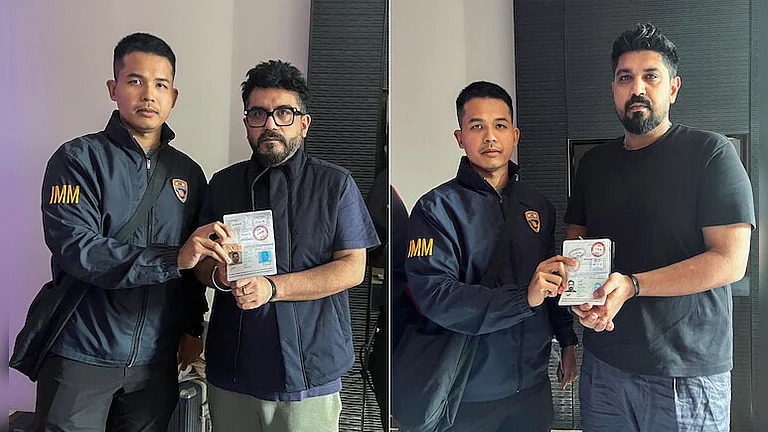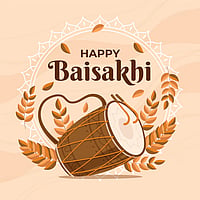Holika Dahan in India is a time when old tales feel alive for people to come together and purify their souls. It's the beginning of a festival of colors. As we venture through the diverse traditions of Holika Dahan across India, let's dive into the warmth of the fires and the sense of unity that covers India. Welcome to a celebration that goes beyond mere rituals, crafting a colorful mix of different cultures coming together.
North India
In North India, Holika Dahan is a special time marked by a big bonfire, symbolizing the triumph of good over evil. This time is all about remembering the story of Holika and Prahlad. This tradition comes from an old tale where Holika, who couldn't be hurt by fire, tried to harm her nephew Prahlad by sitting with him in a fire. But she ended up getting burnt while Prahlad stayed safe, thanks to his belief in Lord Vishnu.
People start getting ready for the rituals a few days before by gathering wood and other stuff that can burn easily. On Holika Dahan, everyone gathers around the bonfire. They pray and then set fire to effigies of Holika, usually made of straw. This act represents getting rid of bad stuff and bringing in good vibes and hope. In some parts of North India, like Purvanchal (eastern Uttar Pradesh and western Bihar), they call the day Sammat Jaarna, adding their own twist to the celebration.
Punjab’s Hola Mohalla
Along with Holika Dahan, a unique phenomenon takes place in Punjab called Hola Mohalla. The festival is a kind of manifestation of the warrior spirit of the Sikh Gurus. The sound of swords clashing and drums beating comes from Gatka, a traditional sport in which Sikhs fight with each other of all ages while showing their skills. It's a display of quickness and power, reminding everyone of the bravery that's always been part of the region.
Langars, which are like big community kitchens, welcome everyone to come and eat. It's a meal where everyone is equal—no matter if you're rich or poor, everyone sits together and shares food made with care and served with kindness. In this land of rivers, Holika Dahan isn't just a lead-up to Holi; it's a sign of the strong spirit of its people, a story of strength and friendship that keeps inspiring and bringing everyone together.
Uttarakhand
In the peaceful hills of Uttarakhand, Holika Dahan brings colorful customs and community together. Here, the bonfires aren't just about good winning over bad. They're a symbol of togetherness. Made with care using wood and cow dung cakes, they show the simple and eco-friendly ways of the locals. They sing old songs, their voices blending in harmony, spreading their words of faith.
The special Kumaoni Holi, celebrated in the Kumaon region of Uttarakhand, makes the festivities even richer. It's a several-day event, starting with Holika Dahan and ending in a burst of colors. The best part is the 'Baithaki Holi,' where folks sit together, singing folk tunes and strengthening bonds.
South India
In South India, Holika Dahan known as Kama Dahanam, takes on a unique charm. In the local legends, there's a story about Lord Shiva and Kamadeva, the god of love. It's said that on this day, Shiva, with his powerful third eye, turned Kamadeva to ashes for disturbing his meditation. To honor this story, people carefully make effigies of Kamadeva and burn them. It's not about anger but about symbolically cleaning our hearts and souls, showing us that from tough times, we can start anew.
At night, you can hear traditional music filling the air from veenas and mridangams. People sway to the music, circling the fires, their faces lit up with joy and contemplation.
Gujarat
In the lively state of Gujarat, Holika Dahan, called Dol Purnima, is a time filled with devotion. When the full moon shines bright, everyone gathers to light the sacred fire, symbolizing the cleansing of bad things.
Families and friends join together in the evening, praying and circling the fire. They offer coconuts, sweets, and special things, asking for good luck and protection from bad things. The air is full of chanting, making everyone feel peaceful and connected. Older folks share stories about Holika and Prahlad, passing down lessons about belief and doing what's right. After the fire settles down, the night gets lively with traditional music.
Bengal
Bengal celebrates Holika Dahan as Dol Jatra. Here, instead of just focusing on the fires, idols of Lord Krishna and Radha are decorated with flowers and colors and paraded through the streets while everyone sings and dances to devotional songs.
While the bonfires of Holika Dahan are lit, they're not just about burning evil. They serve as a call for the community to come together for prayer and fun. People gather to pray to Lord Krishna or Lord Shiva, asking for blessings of love and happiness.
As the fires of Holika Dahan simmer down across India's varied landscapes, we're reminded of the strong bond that ties us together. Every tradition adds to the colorful fabric of Indian culture, marking the start of Holi—a festival that fills the nation's spirit with shades of togetherness and happiness, surpassing differences in region and religion.


























